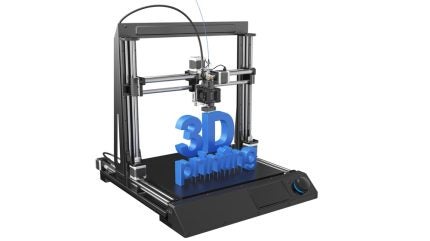
In recent years, 3D printing has captured the imagination of innovators across a wide array of industries, and the packaging sector is no exception. As brands seek smarter, more sustainable ways to design, produce and deliver their products, 3D printing has quietly become a game-changing tool.
While its use in manufacturing and prototyping is well-established, its application in packaging offers promising new ground – where creativity meets efficiency, and sustainability becomes not just a buzzword but a reality.
As the technology matures and costs continue to fall, 3D printing is reshaping how businesses approach packaging design, customisation and production.
From rapid prototyping to bespoke branding, and from waste reduction to decentralised manufacturing, its benefits stretch far beyond novelty.
Rapid prototyping and innovation in design
Traditionally, developing a new packaging concept could take weeks – even months – of back-and-forth between designers, manufacturers and marketing teams. With 3D printing, the timeline is drastically reduced.
Brands can now bring packaging ideas to life in a matter of hours, enabling faster decision-making and tighter feedback loops.

US Tariffs are shifting - will you react or anticipate?
Don’t let policy changes catch you off guard. Stay proactive with real-time data and expert analysis.
By GlobalDataThis speed is especially valuable during early-stage product development, where packaging plays a crucial role in shelf appeal, functionality and brand identity. Designers can test shapes, closures, ergonomics and materials without committing to costly moulds or minimum production runs.
Whether it’s a new bottle cap for a health drink or an innovative folding box for cosmetics, 3D-printed prototypes provide tangible versions for testing and presentation – helping companies make informed choices before entering full-scale production.
Moreover, 3D printing allows for complex geometries that would be expensive or impossible to achieve using traditional methods. Organic curves, interlocking parts and intricate textures can all be experimented with freely, fostering greater creativity and opening doors to novel forms of brand expression.
Customisation and personalised packaging experiences
Consumer expectations are evolving. With the rise of e-commerce, influencer marketing and limited-edition launches, packaging has become more than just a container – it is an experience.
3D printing caters to this trend by enabling mass customisation and personalisation at a manageable cost.
Brands are now experimenting with tailored packaging that reflects customer data, special events or seasonal campaigns. Imagine a perfume bottle engraved with a customer’s name or a luxury box that adapts its shape based on the product’s configuration.
These personal touches enhance the consumer experience and can generate significant marketing buzz, especially on social media platforms.
Custom packaging is also invaluable in sectors like pharmaceuticals, where patient-specific solutions are increasingly in demand. With 3D printing, blister packs or medication organisers can be designed around individual dosages, improving safety and compliance.
In high-value markets such as electronics or jewellery, bespoke inserts and protective structures ensure products arrive safely while reinforcing a premium feel.
Sustainability and decentralised production
Environmental impact is a growing concern in packaging. Single-use plastics, high carbon footprints and non-recyclable materials have drawn public scrutiny and regulatory pressure.
3D printing offers a compelling response, promoting on-demand manufacturing and more responsible material usage.
By printing packaging components only when needed – and closer to the point of use – companies can reduce transportation emissions and avoid overproduction. Warehousing costs also drop, as digital files replace physical inventory.
This leaner, more localised supply chain contributes to a more sustainable operation.
Material innovation is another frontier. While traditional 3D printing has relied on plastics such as PLA or ABS, newer filaments made from recycled materials, bio-based polymers or even algae and food waste are emerging.
These alternatives align with circular economy principles and help brands meet their sustainability goals without compromising on performance.
Furthermore, 3D printing can support packaging reusability. Rather than designing for single use, companies can explore modular packaging elements that serve multiple functions or are easy to disassemble and repurpose.
This approach encourages more thoughtful consumption and fosters long-term brand loyalty.
Looking ahead
As technology continues to evolve, the role of 3D printing in packaging is expected to grow even more prominent. Improvements in speed, precision and material diversity will make it feasible for large-scale production, not just prototyping or niche applications.
For designers, it will mean greater creative freedom. For supply chains, more resilience and adaptability. For consumers, more engaging, sustainable experiences. And for the planet, a welcome shift towards reduced waste and smarter resource use.
While it may not replace traditional packaging methods entirely, 3D printing offers an agile complement that can unlock new efficiencies and expressions.
For businesses willing to explore its potential, the rewards could be substantial – not just in terms of innovation, but in staying relevant and responsible in an ever-changing marketplace.
In essence, 3D printing for packaging is not merely a trend, but a strategic opportunity. One that brings design, technology and sustainability together in ways we are only beginning to understand – and whose impact will continue to unfold for years to come.



